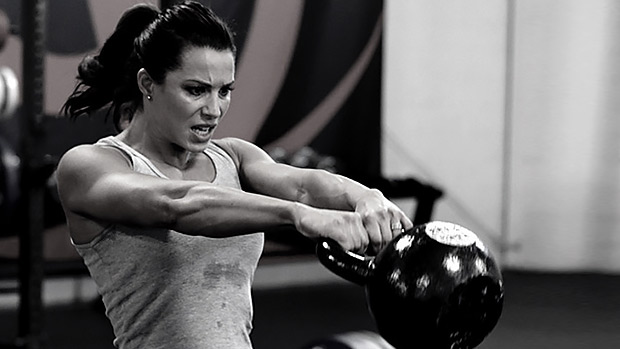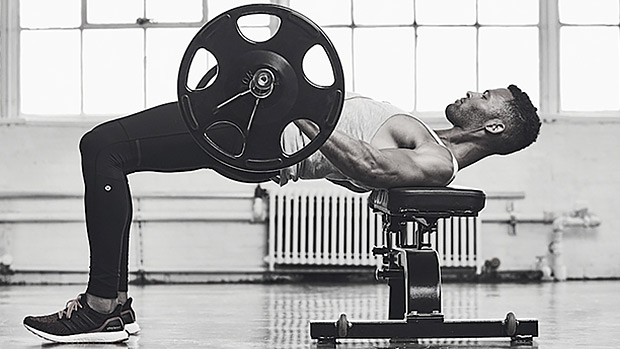
Pumping the gluteal muscles: a rubber tourniquet
To be honest, I’ve never been a fan of exercise bands. For one thing, they – unlike barbells – don’t make a pleasant sound to the jock’s ear: the clinking of pancakes and rattling on the floor. Besides, not a single person in the gym has ever asked another person how much they can stretch.
But then came the pandemic. Like millions of people, I had to start training at home, setting up a gym in my garage: a weight frame, a base bench, a rusty Olympic barbell and a pair of weights. Garden shears and some soil.
It was going well at first, but over time I began to miss the good old gym and the million exercises I could only do on block machines.
So I – with an ache in my heart – splurged on a whole bunch of different bands. Certainly not thin and shiny, but so thick and tight that King Kong’s sister could intercept the hair on her head when she washed her face. Or you could shoot an appropriately sized slingshot into a jeep somewhere.
And, you know, they’ve opened up a whole new, wondrous world to me! Not only can I repeat almost all the exercises I’ve done on the blocks, but I can make many of them more effective.
I even started to do leg curls and extensions with them – and for the first time in my life I do not feel any discomfort, because now the movement path is determined only by my physique, not by a stupid mechanical design of the training machine, designed for someone else.
And now I’ll tell you the really scary thing: I also found that in some cases the harnesses work better than our favourite iron. For example, pulling between the legs is much more effective at loading the glutes and biceps of the thighs than the swings and bridges. Wait, don’t close and unsubscribe, I’ll explain everything in a moment.
The minus of the swing.
Kettlebell swings are great… for developing power, building strength endurance and even burning calories. They activate the working muscles much more than other variants of pulls and bends. But… but… in terms of gluteal hypertrophy, they’re a bit of a bust.

Swings don’t help hypertrophy.
Yes, after swinging by powerful straightening of body in hip joints we throw the weight up, but after reaching a given height of flight, it freezes at first, and then by itself goes back to the ground with acceleration of gravity 9.8 m/s2.
The time under load is negligible, there is simply no eccentric phase (sinking under load), which means that the contribution to hypertrophy is minimal.
Minus of the bridge

The good thing about the bridge is that you can lie on your back and browse your social media. There’s nothing else that’s good. First, the barbell, heavy enough for brutally strong glutes, is not easy to place on yourself. And even if it does, the barbell eventually pushes through the groove in the pelvic bones, not to mention the important soft tissues.
The range of motion is tiny. And most people don’t even get to “feel” the gluteal work due to hip mobility issues or a lack of movement control when lifting and lowering.
Plus stretches
But pulling between the legs, on a block or with a harness, provides constant muscle tension throughout this excruciating movement. And it is this time stretched under load that stimulates muscle growth.
As already mentioned, in the swing, the time under load is minimal, and in order for the bridge to provide constant muscle tension throughout the entire range of motion, the barbell must be so heavy that many people are no longer able to control the weight, the technique is distorted.
The main advantage of the between-foot pull is the ability to reach total failure and bring the gluteus maximus to a white-hot position.
After performing maximum reps, you step back 5-10 cm and work again to failure. Repeat the cycle until your shorts are on fire.
How to pull between your legs
- Hook the tourniquet at one end to something stationary and place the other end on the floor.
- Stand with your back to the attachment point, bend over and grasp the expander with both hands.
- Walk forward so that the harness is stretched.
- Spread your feet shoulder width apart and “twist” your feet into the floor, mentally trying to spread them apart.
- Now straighten by straightening your hips and contracting your gluteal joints. At the end point, pause for two seconds. Then allow the tightening harness to return you to the lower point of the oblique movement.
- Having completed all the repetitions to failure, step back a little and continue until another failure. Reach the absolute failure of the bounce.
- Sit in a basin of ice.

Comments (0)